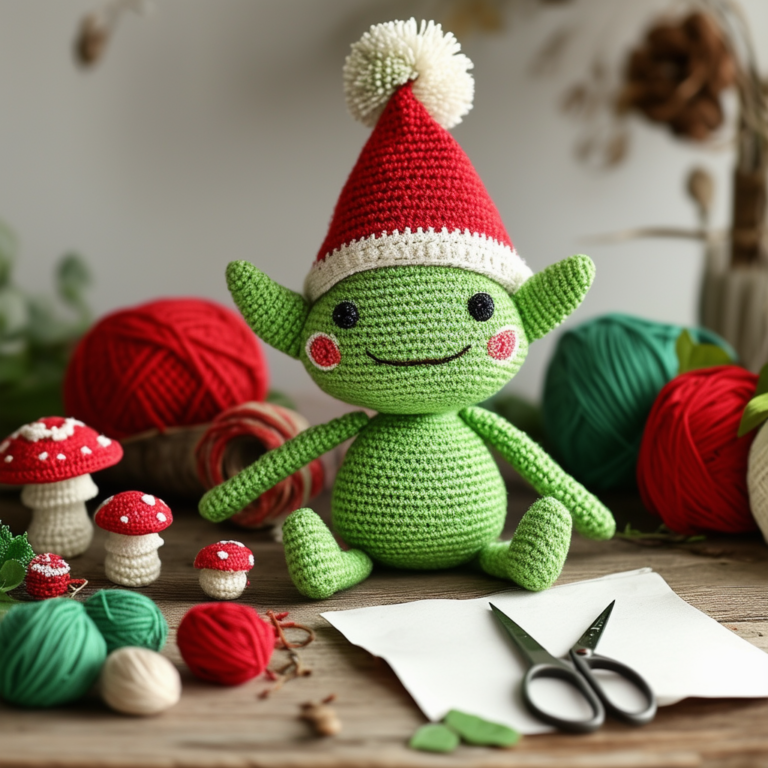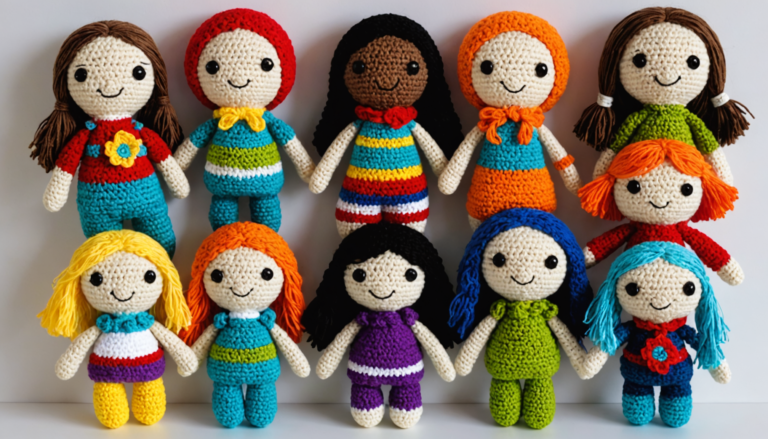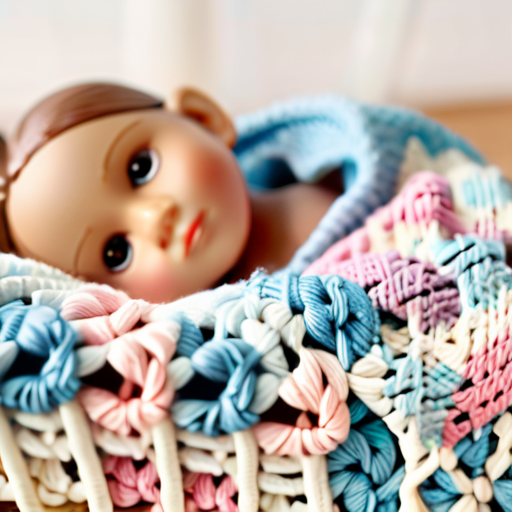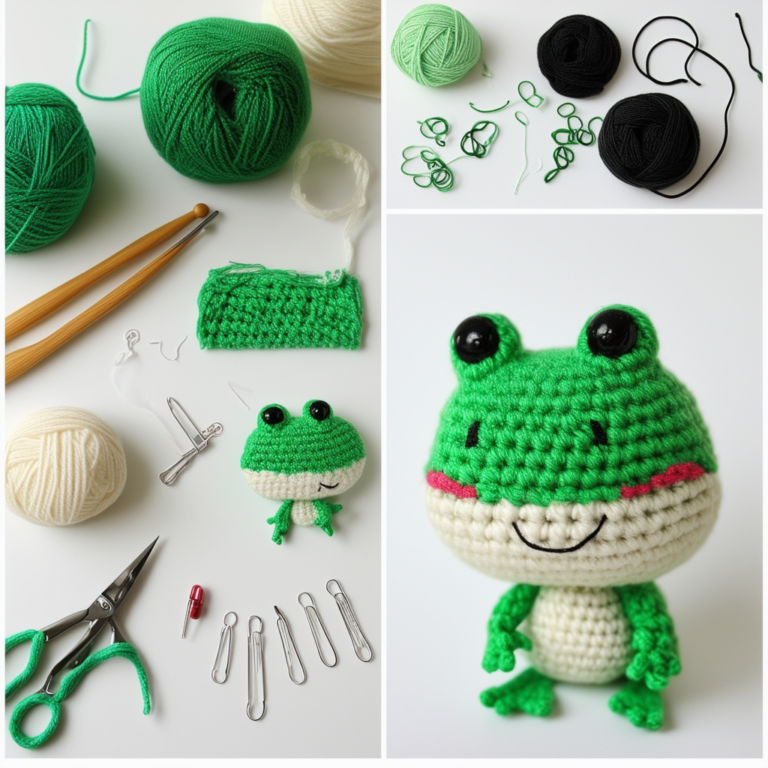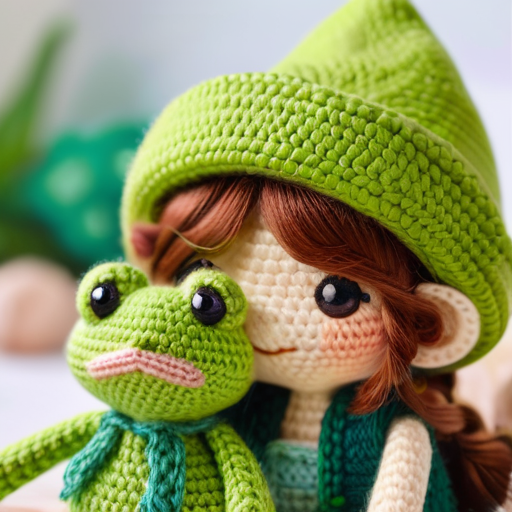Gathering Supplies and Starting the Crochet Frog
Embarking on the creation of a charming green frog doll through crochet is a rewarding endeavor, particularly for beginners. This process, while seemingly complex, simplifies significantly with careful planning and a methodical approach. Before even picking up a crochet hook, the first crucial step involves gathering the necessary supplies. This ensures a smooth and uninterrupted crafting experience. You will require yarn in shades of green, ideally a light and a darker green for contrast, to achieve a realistic frog appearance. A medium-weight yarn is recommended for ease of handling and a pleasing finished texture. Furthermore, you’ll need a crochet hook appropriate for your chosen yarn weight; the yarn label will usually provide this information. A 4mm or 5mm hook is a common choice for medium-weight yarn. In addition to yarn and a hook, you will need a pair of scissors for snipping the yarn, a tapestry needle for weaving in loose ends, and stuffing material, such as polyester fiberfill, to give your frog its plump, three-dimensional form. Having all these materials readily available will prevent frustrating interruptions during the crochet process.
Now, with your supplies assembled, we can commence the actual crochet work. The foundation of your frog doll will be a simple magic ring. This technique creates a seamless starting point, eliminating any visible join in the finished product. To create a magic ring, make a slip knot on your hook. Then, hold the tail of the yarn and wrap the working yarn around your index finger twice. Insert your hook into the loop on your finger, and pull through a loop. You should now have two loops on your hook. Yarn over and pull through both loops. This completes the first round. From here, you will begin to increase the number of stitches in subsequent rounds to create the body of the frog. The pattern will typically involve working single crochet stitches, which are a fundamental crochet stitch, easy to master even for beginners. Each round will increase the size of the circle, gradually forming the spherical shape of the frog’s body. Remember to follow the pattern meticulously, counting your stitches carefully at the end of each round to ensure accuracy and prevent any inconsistencies in the final product. Accurate stitch counting is paramount to achieving a well-proportioned and aesthetically pleasing frog.
As you progress through the pattern, you will notice the instructions guiding you to create the frog’s various features. This might involve creating separate pieces for the legs, arms, and head, which will then be attached to the main body. The pattern will likely specify the number of stitches and rounds required for each component. Pay close attention to these details, as they are crucial for achieving the desired shape and size of each body part. Once all the individual components are completed, the final step involves assembling the frog. This involves carefully sewing the limbs and head onto the body using your tapestry needle and the same yarn you used for crocheting. Ensure that the seams are neat and secure, and that the stuffing is evenly distributed throughout the body to create a pleasingly plump frog. Finally, weave in all loose ends to create a clean, professional finish. With a little patience and attention to detail, you will soon have a delightful, handmade green frog doll.
Creating the Frog’s Body and Legs
Creating the Frog’s Body and Legs: Now that you have the necessary materials gathered and are familiar with basic crochet stitches, we can begin constructing the adorable green frog doll. We will start with the body, the foundation upon which the rest of our amphibian friend will be built. Using your chosen green yarn and a 4mm crochet hook, begin by creating a magic ring. This technique, while initially seeming slightly complex, is crucial for creating a seamless and aesthetically pleasing finished product. Ensure the ring is snug but not overly tight, allowing for comfortable working.
Following the creation of the magic ring, we will work in rounds, increasing the number of stitches in each round to gradually expand the frog’s body. The pattern will specify the exact number of increases needed for each round; meticulously following these instructions is key to achieving the desired shape and size. Remember to maintain consistent tension throughout the process; uneven tension can lead to an unevenly shaped frog. Count your stitches carefully at the end of each round to ensure accuracy. Any discrepancies should be addressed immediately to prevent further complications.
Once the body has reached the specified number of rounds, we will transition to working in single crochet stitches without any increases. This section of the pattern will create the main body of the frog, providing the necessary bulk and form. Continue working in single crochet until the body reaches the desired length. Again, consistent tension is paramount here, ensuring a smooth and even surface. This section of the pattern is relatively straightforward, allowing beginners to build confidence and practice their single crochet technique.
Next, we move on to the creation of the frog’s legs. These will be worked separately, mirroring each other in size and shape. The pattern will provide detailed instructions for creating each leg, starting with a foundation chain and then working in increases and decreases to achieve the characteristic frog leg shape. Pay close attention to the placement of increases and decreases; these are crucial for shaping the legs correctly. Improper placement can result in legs that are misshapen or disproportionate to the body.
As with the body, maintaining consistent tension is vital when crocheting the legs. This will ensure that the legs are firm and well-defined, rather than floppy and shapeless. Once the legs are completed, they will be attached to the body. The pattern will specify the exact placement of the legs, ensuring they are positioned symmetrically and securely attached. A secure attachment is crucial for the overall stability and appearance of the finished frog. Consider using a yarn needle to weave in the ends of the yarn securely, preventing any loose ends from unraveling.
Finally, before moving on to the next stage of the project, take a moment to examine your work. Ensure that the body and legs are appropriately sized and shaped, and that the stitches are neat and consistent. Addressing any imperfections at this stage will prevent further complications and ensure a high-quality finished product. With the body and legs completed, you are well on your way to creating a charming and unique green frog doll. The next section will guide you through the creation of the head and other features, bringing your adorable amphibian friend to life.
Finishing Touches and Embellishments
Now that the body of your adorable green frog doll is complete, it’s time to focus on the finishing touches that will truly bring it to life. These final steps, while seemingly minor, significantly impact the overall charm and appeal of your creation. First, we’ll address the securing of loose ends. Carefully weave in all loose yarn tails using a yarn needle. This prevents unraveling and ensures a neat, professional finish. Take your time with this process; a rushed job can easily undo the meticulous work you’ve already completed. Ensure each tail is securely fastened, perhaps even tying a small knot before weaving it in for extra security.
Next, consider the eyes. Safety eyes are a popular choice for crocheted amigurumi, offering a durable and expressive finish. However, if you prefer a softer, more tactile approach, you can embroider the eyes using black yarn. For embroidery, use a simple backstitch to create two small, neat circles. Regardless of your chosen method, ensure the eyes are evenly spaced and positioned appropriately on the frog’s face, contributing to its overall cuteness. A slightly upward tilt can add a playful expression. Similarly, you can embroider a small smile using the same black yarn, further enhancing the frog’s personality.
Moving beyond the facial features, let’s explore additional embellishments. A small, crocheted crown could add a touch of whimsy. This could be a simple circle of green yarn, slightly smaller than the frog’s head, attached with a few stitches. Alternatively, a tiny crocheted flower, perhaps in a contrasting color like yellow or pink, could be affixed to the frog’s head or back. These small additions inject personality and visual interest, transforming a simple frog into a unique and charming character.
Furthermore, consider adding texture. A simple technique is to use a contrasting yarn color to create small, decorative stitches along the frog’s back or belly. This can mimic the texture of a frog’s skin, adding a layer of realism to your creation. Experiment with different stitch patterns to achieve the desired effect. Remember, the goal is to enhance the visual appeal without overwhelming the overall design. Subtlety is key here; less is often more.
Finally, consider the overall presentation. Once you’re satisfied with the embellishments, you might want to add a small loop of yarn to the frog’s head for hanging. This allows you to display your creation as a charming ornament or keychain. Alternatively, you could create a small crocheted stand for the frog to sit on, adding another element to the overall design. This final touch elevates the project from a simple craft to a carefully considered piece of art. In conclusion, these finishing touches, while seemingly small details, are crucial in transforming your crocheted frog from a simple creation into a truly delightful and unique piece. The careful attention to detail in these final steps will be evident in the finished product, showcasing your skill and creativity.

